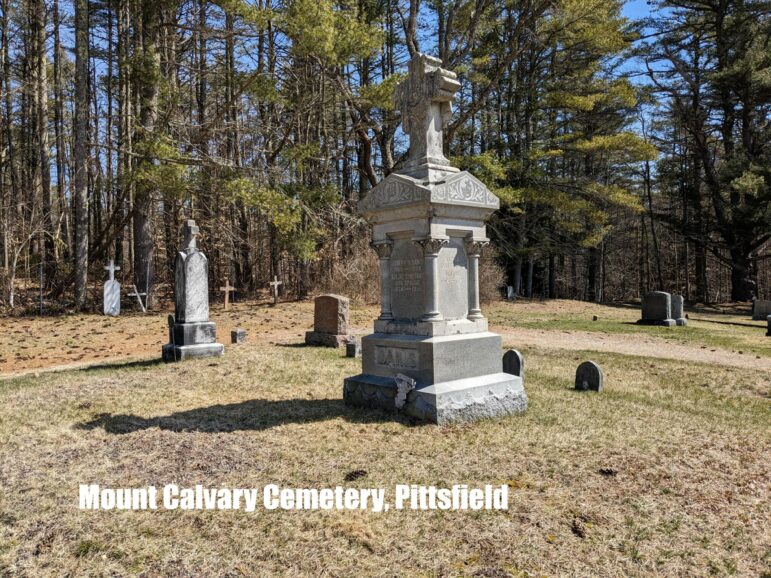By Christopher Jensen
The Site Evaluation Committee has exceeded its authority and is wrong to consider the visual impact of proposed utility projects on anything but wind farms, according to a bill scheduled for a hearing before a legislative committee on Feb. 1.
“My concern is that we have a regulatory agency that is creating new law where the law does not exist,” said the bill’s sponsor, Rep. Michael Harrington, a Republican from Strafford, a former Public Utilities Commissioner and former member of the S.E.C.
His bill proposes limiting the S.E.C.’s extensive consideration of visual impact to wind farms.
Currently the visual impact is considered on all projects, including the Northern Pass, which is now before the S.E.C.
But that timing is coincidental, Harrington said.
“This is not pro or anti Northern Pass. It simply says that the Site Evaluation Committee went way beyond the boundaries,” Harrington told InDepthNH.org.
Harrington says Northern Pass is irrelevant because what his House Bill 462 proposes could not be accomplished before the S.E.C. makes a decision on Northern Pass, which is expected no later than the end of September.
“Even if it was my intent to affect Northern Pass, it is impossible for it to happen,” he said.
The Northern Pass proceedings have moved far enough along that a change in rules would not have much, if any, effect, said Jim O’Brien, the director of external affairs of The Nature Conservancy, which closely watches the S.E.C.
“I believe that the Northern Pass docket would continue to move ahead under the existing S.E.C. rules even if this change were to happen,” he said.
Susan Arnold, the vice president for conservation at the Appalachian Mountain Club, said she was puzzled by the bill.
“Having spent several years working with the legislature and the S.E.C. to update these rules to ensure that the S.E.C. can appropriately fulfill its statutory duties, we question the logic behind, and motivation for, this bill,” she said.
But Northern Pass – which would stretch 192 miles through the state – is an example of the type of electrical utility project that Harrington’s bill says are being wrongly affected.
The issue goes back to an extensive reworking of the S.E.C. ordered in 2013 by the legislature. Its goals were streamlining the process, making it more accessible to the public and better protecting the environment.
The new rules were adopted late in 2015 and said all utility projects must undergo an extensive study of “aesthetics,” by which it means visual impact.
Among the requirements is, “A description and map depicting the locations of the proposed facility and all associated buildings, structures, roads, and other ancillary components, and all areas to be cleared and graded, that would be visible from any scenic resources, based on both bare ground conditions using topographic screening only and with consideration of screening by vegetation or other factors.”
Harrington said the legislation that enabled the S.E.C. reorganization states “wind energy systems” must have such a detailed study of the visual impact.
But he said there is no mention of other types of utility projects and that the S.E.C. improperly decided to include them.
“They drastically expanded that and took all these requirements for the visual simulation and applied them to all energy facilities in the state,” he said.
Harrington said there are several other examples of the S.E.C. going too far with its rules. His bill would require the S.E.C. to conduct a review and make sure its rules match what the legislature allowed.
That could mean that the extensive requirements for a visual impact assessment would only apply to wind energy projects.
At the 9 a.m. hearing before the Science, Technology and Energy Committee Harrington is expected to have some opposition, particularly from environmental groups that were involved in the S.E.C. revisions.
One thing likely to be mentioned is that another part of the enabling legislation has a section that says: “The site and facility will not have an unreasonable adverse effect on aesthetics.”
Before the S.E.C. rules were adopted they were reviewed by legislators and the lawyers at the Joint Legislative Committee on Administrative Rules (JLCAR), which has oversight for such regulatory changes.
When JLCAR approves rules there is a presumption that it has concluded “that the committee has the authority to adopt those rules,” said Susan S. Geiger, a lawyer who has represented energy projects before the Site Evaluation Committee and a former Public Utilities Commissioner.
“Based on my quick reading of the bill and of the statute I think the rules that have been adopted are within the S.E.C.’s authority,” she said.
The Site Evaluation Committee’s authority is pretty broad, said Rep. Carol McGuire, a Republican from Merrimack who is also the vice chair of JLCAR. And, she said, that gives it the latitude to require a wide range of information.
But Harrington said that he had the impression that JLCAR was simply overwhelmed by the complexity and missed some crucial points.
Scott Eaton, the Administrative Rules Director for the Office of Legislative Services, said “as a nonpartisan legislative staff office we cannot comment or otherwise give views for the public on proposed legislation.”
The S.E.C. did not immediately respond to a request for comment.
Harrington was appointed to the P.U.C. in 2012 on a 4 -1 vote over the objection of Executive Councilor Ray Burton. At the time Burton told New Hampshire Public Radio that there were “too many questions in my mind about his areas of conflict of interest.”
That was a reference to Harrington having a pension from Northeast Utilities, now known as Eversource.
Harrington denied there was a conflict and Attorney General Michael Delaney looked into the issue at Burton’s request and concluded there was not a problem, according to a story by N.H.P.R.





